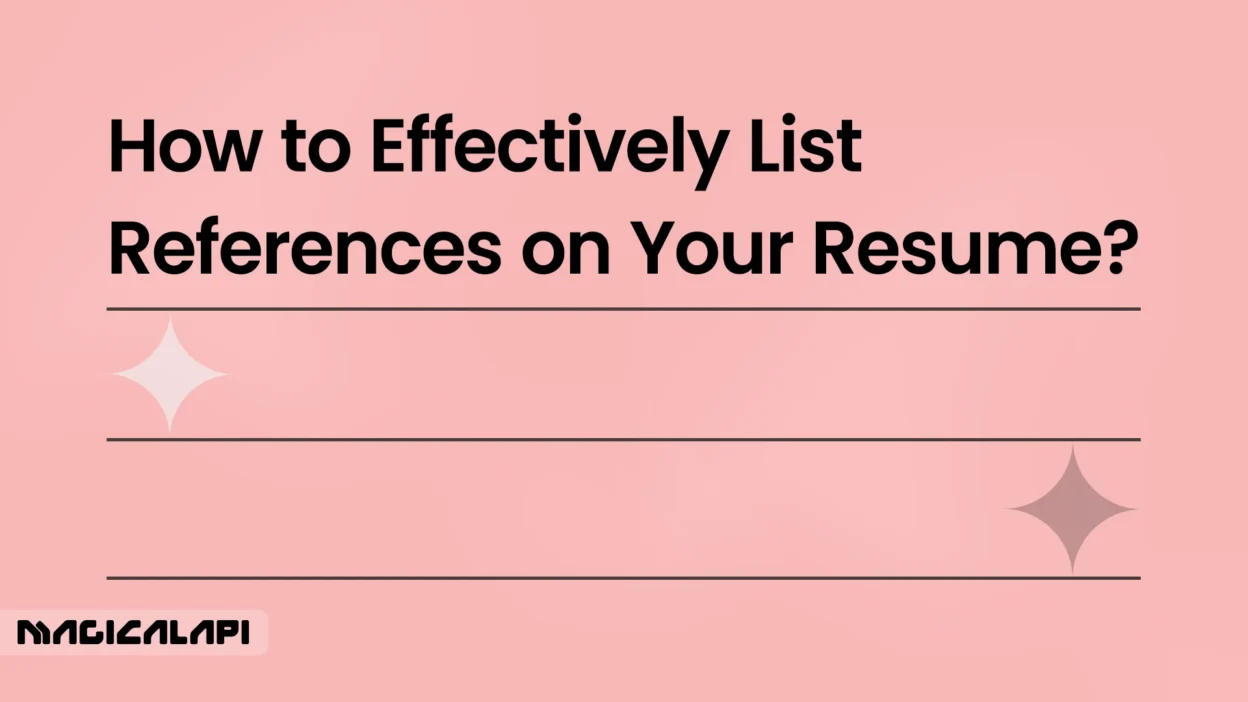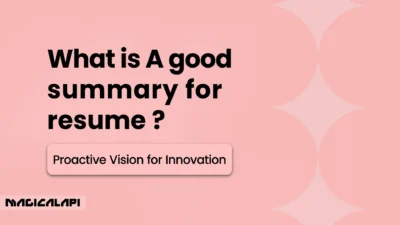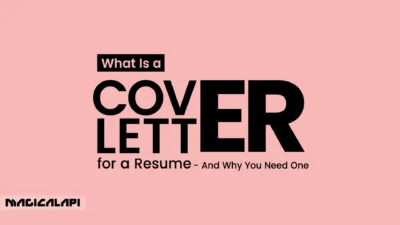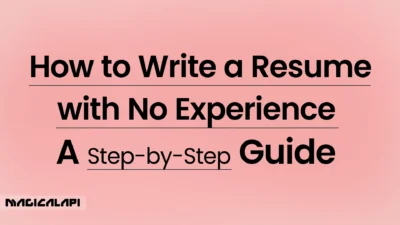how to list references on resume? Writing a great resume is an art, and every detail matters; Although your experience and skills are the focal point, a well-organized reference list can be the clincher by highlighting your credibility and professionalism.
If you’ve ever been curious about how to list references on a resume in a manner that impresses employers, you’re at the right place! This guide will take you through every step of the way, from deciding who to list to making your list look like a professional’s. Let’s start and make your references work as hard as you do.
Table of Contents
How to Write a Resume Reference List
A resume reference list is not a phone book of names and numbers, but a tactical tool to boost your application. Employers use it to verify your credentials, work ethic, and personality. But before you start jotting down contacts, there are a few critical steps to master. Here is how to make your reference list shine.
First, understand that your reference list is typically a separate document from your resume. Unless a job posting explicitly asks for references upfront (which is rare), you’ll provide them later in the hiring process. The phrase “references available upon request” on your resume is optional these days, but having a polished list ready is non-negotiable. Let’s break it down step by step.
Discover your resume’s impact—check your Resume Score today!
Unlock actionable insights to optimize your resume and boost your career potential.
How to List Professional References on a Resume
When it comes to how to list professional references on resume, quality trumps quantity every time. These are the people who can vouch for your skills, accomplishments, and workplace demeanor (think former bosses, colleagues, or mentors.) Personal references, like friends or family, usually don’t belong here unless the job specifically calls for them (more on that later). Here’s how to nail this process.
1. Determine How Many References to Include
The magic number depends on the job and the expectations of employers, but three to five references is a safe bet for most positions. The entry-level candidate may go for three, while senior professionals nudge the maximum to five if they have an extensive well of appropriate contacts. Look at the job ad. Some employers will state clearly how many they expect. If not, aim at an actionable list that cuts across different areas of your working life, including leadership, teamwork, and functional skills.
How to list references on resume? Too many references can overwhelm a hiring manager, while too few might suggest you’re scrambling for support. Strike a balance that feels confident and comprehensive.
Magical Resume Score
Discover everything you need to know about Magical Resume Score , how it evaluates your resume, and the various options available to enhance your job application and improve your chances of success.
2. Select Your Resume References
Finding the right people is where strategy comes in. Opt for contacts who know you and can utter great things about your work. A so-so “they were fine” will not do! Most recent supervisors or co-workers at your last two or three positions are highest priority because they’re most relevant to your current career level. Professors or academic advisors are great choices for recent graduates, and volunteer coordinators can fill gaps if paid experience is thin.
Diversity matters too. A mix of perspectives; say, a manager, a peer, and a client paints a fuller picture of your abilities. Just make sure they’re all professional contacts who can keep it relevant to the job you’re chasing.
3. Decide How to Send Your Reference List
This is the next step on how to list references on resume. Timing and presentation are everything. The majority of employers request references after an interview, so don’t bog down your resume with them in the first place. Create a separate page, formatted to resemble your resume (same font, header, etc.), and stand ready to email or provide it when asked. PDF is your friend here. It will keep everything crisp and professional across platforms.
If the job application asks for references with your initial submission, follow instructions to a T. Some might want them in the body of an email, others as an attachment. Attention to detail shows you’re serious.
4. Ask Your Contacts to Be a Reference
This is a courtesy and preparatory step. Never list anyone without first requesting their permission. It’s a sure path to a humiliating phone call for them and a negative reflection on you. Reach out to them with a friendly message, like:
“Hi [Name], I’m submitting an application for [Job Title] at [Company], and I’d really like to use you as a reference. You worked with me on [specific skill/project] directly at [Company Name], and I believe you’d be able to speak to it. Would you be okay with that? If you need any information about the position, please let me know!”
Give them an escape clause, and if they’re willing, give them a copy of your resume or your highlights. It enables them to tailor their comments to the job. And certainly, follow up with a thank-you note. They’re doing you a favor!
How to List Personal References on a Resume
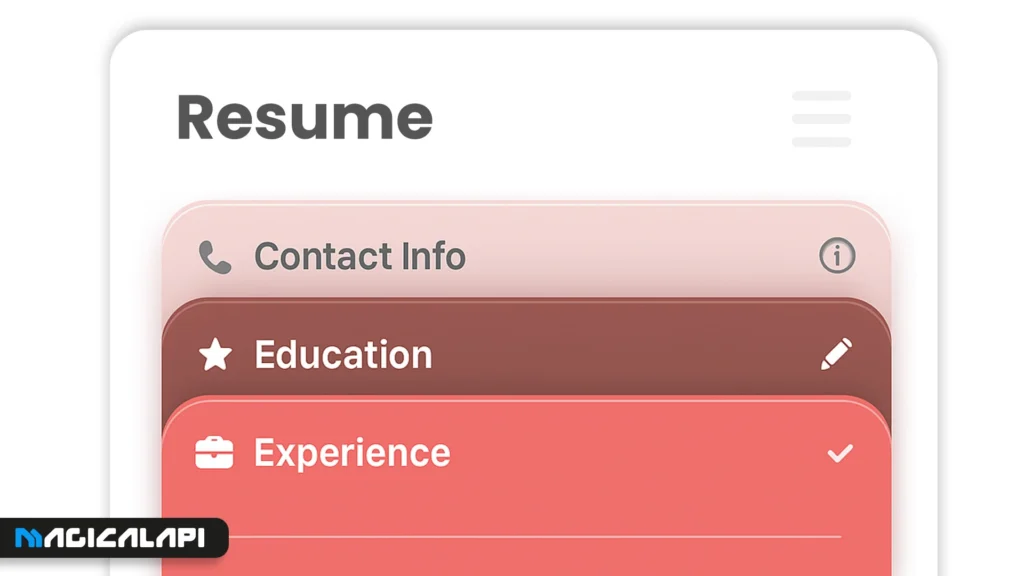
Not every job requires professional references exclusively. Some creative or entry-level jobs might welcome to put personal references on a resume in order to assist in describing your personality or civic involvement. These can include coaches, clergy, or close family friends, people who are not members of your family but know you outside of the workplace.
The process is the exact same as professional references: request permission, confirm their contact information, and include them in the same way. Ensure the job demands it, however. Personal references can appear out of place in a business setting unless specifically called for.
Reference List Format Template
Consistency is your secret weapon. A clean, uniform format makes your list easy to read and professional. Here’s a simple template to follow:
[Your Name]
[Your Address]
[City, State, ZIP]
[Phone Number] | [Email Address]
References
[Reference Name]
[Job Title], [Company Name]
[Phone Number]
[Email Address]
[Relationship to You, e.g., “Former Manager”]
[Reference Name]
[Job Title], [Company Name]
[Phone Number]
[Email Address]
[Relationship to You]
Repeat for each entry. Keep spacing even, and align everything neatly. If you’re emailing it, slap this into a doc with your resume’s header for a cohesive vibe.
Read More: Data Analyst Resume
Resume Reference List Examples
Seeing it in action helps, right? Here are two examples—one professional, one with a personal twist.
Professional Reference List Example
Jane Doe
123 Main St, Apt 4B
Austin, TX 78701
(512) 555-1234 | [email protected]
References
Michael Smith
Senior Project Manager, TechCorp
(512) 555-5678
[email protected] (mailto:[email protected])
Former Supervisor
Lisa Tran
Software Engineer, TechCorp
(512) 555-9012
[email protected] (mailto:[email protected])
Colleague
Dr. Robert Kim
Professor of Computer Science, UT Austin
(512) 555-3456
[email protected] (mailto:[email protected])
Academic Advisor
Personal Reference List Example (For a Specific Role)
This is an example of how to list personal references on resume:
John Roe
456 Oak Lane
Portland, OR 97201
(503) 555-7890 | [email protected]
References
Sarah Lee
Volunteer Coordinator, Portland Food Bank
(503) 555-2345
[email protected] (mailto:[email protected])
Volunteer Supervisor
Tom Baker
Youth Soccer Coach, Portland Rec League
(503) 555-6789
[email protected] (mailto:[email protected])
Coach of 5 Years
This format keeps it tight and tailored—exactly what employers want.
Common Mistakes to Avoid When Listing References
We talked about all things you need to know about how to list references on resume but it is always a great help to know what you need to avoid. Here are some tips:
- Listing Without Permission: First, always request permission. It’s a rookie mistake to catch someone off guard with a referral call.
- Irrelevant Contacts: Your high school buddy is great, but if they haven’t worked with you professionally, they’re not serving you in any way.
- Outdated Info: Double-check phone numbers and emails. A misplaced digit might equal a lost opportunity.
- Overloading the List: Five is generally the maximum—don’t overwhelm the hiring manager with choices.
- Mismatched Formatting: If your resume is clean and contemporary, your reference list should be the same. No Comic Sans catastrophes here!
Avoiding these keeps your reference game tight and stress-free.
For checking your resume and ats friendly check Resume Checker page.
Your Reference List, Your Power Move
There you have it. That’s all it takes to dominate listing references on a resume. A topnotch list of references is a nicety not to be neglected; it is your chance to have others sing your praises and carry you home. Take the time to carefully choose, nicely format, and ask politely, and you will have a page as good as the rest of your resume. Ready to land that dream job? Your references are rooting for you; make sure they’re prepared to shine!
FAQs About how to list references on resume
Should I put references directly on my resume?
Not usually. Save space for your skills and experience, and keep references on a separate sheet to share when asked.
How far back can my references go?
Stick to the last 5-10 years if possible. Recent contacts carry more weight, but a standout reference from further back can work if they’re still relevant.
What if I don’t have professional references yet?
Use academic mentors, volunteer leaders, or even clients from freelance jobs. Just keep it professional and tied to your abilities.
Can I use the same references for every job?
You can, but tailoring them to each role is smarter. Pick people who align with the job’s needs for maximum impact.
How do I know if my references gave a good review?
You usually won’t know directly. But if they agreed to vouch for you and you prepped them well, trust they are going to support you.


